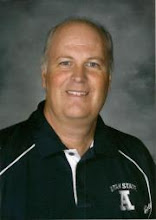Stem cell breakthrough uses no embryos
Laboratory teams on two continents report success in a pair of landmark papers released Tuesday. It's a neck-and-neck finish to a race that made headlines five months ago, when scientists announced that the feat had been accomplished in mice.
The "direct reprogramming" technique avoids the swarm of ethical, political and practical obstacles that have stymied attempts to produce human stem cells by cloning embryos.
Scientists familiar with the work said scientific questions remain and that it's still important to pursue the cloning strategy, but that the new work is a major coup.
"This work represents a tremendous scientific milestone - the biological equivalent of the Wright Brothers' first airplane," said Dr. Robert Lanza, chief science officer of Advanced Cell Technology, which has been trying to extract stem cells from cloned human embryos.
"It's a bit like learning how to turn lead into gold," said Lanza, while cautioning that the work is far from providing medical payoffs.
"It's a huge deal," agreed Rudolf Jaenisch, a prominent stem cell scientist at the Whitehead Institute in Cambridge, Mass. "You have the proof of principle that you can do it."
The White House lauded the papers, saying such research is what President Bush was advocating when he twice vetoed legislation to pave the way for taxpayer-funded embryo research.
There is a catch with the new technique. At this point, it requires disrupting the DNA of the skin cells, which creates the potential for developing cancer. So it would be unacceptable for the most touted use of embryonic cells: creating transplant tissue that in theory could be used to treat diseases like diabetes, Parkinson's, and spinal cord injury.
But the DNA disruption is just a byproduct of the technique, and experts said they believe it can be avoided.
The new work is being published online by two journals, Cell and Science. The Cell paper is from a team led by Dr. Shinya Yamanaka of
Both reported creating cells that behaved like stem cells in a series of lab tests.
Full Story:
http://hosted.ap.org/dynamic/stories/S/STEM_CELLS?SITE=UTSAC&SECTION=INTERNATIONAL&TEMPLATE=DEFAULT#





No comments:
Post a Comment